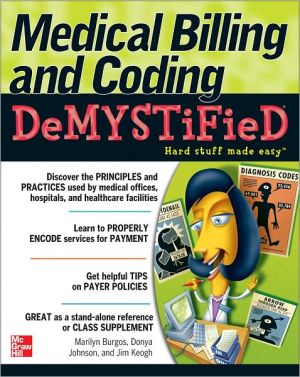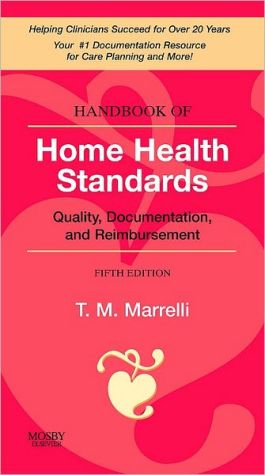Medical Malpractice and the U. S. Health Care System
Medical malpractice lawsuits are common and controversial in the United States. Since early 2002, doctors' insurance premiums for malpractice coverage have soared. As Congress and state governments debate laws intended to stabilize the cost of insurance, doctors continue to blame lawyers and lawyers continue to blame doctors and insurance companies. This book, which is the capstone of three years' comprehensive research funded by The Pew Charitable Trusts, goes well beyond the conventional...
Search in google:
This book connects medical liability to broader trends and goals in American health policy.
\ Cambridge University Press\ 0521849322 - Medical malpractice and the U.S. health care system - Edited by William M. Sage and Rogan Kersh\ Excerpt\ \ Introduction\ William M. Sage and Rogan Kersh\ With the United States embroiled in its third major medical malpractice crisis in the past thirty years, this volume brings together an array of experts from law, medicine, social science, and business to explore the public policy of medical liability. As malpractice premiums continue to rise, doctors and lawyers engage in bitter debates across the country, and legislators struggle to comprehend and consider a myriad of proposed medical liability reforms, this volume provides an explanation of malpractice policy past and present – and a set of promising paths forward.\ The major failing of the current debate over malpractice reform is that it ignores the relationship between medical malpractice policy and core characteristics of American health care. For reasons both deliberate and circumstantial that this book describes, conventional approaches to medical liability barely pay lip service to the persistent inequities of access to health care and health insurance in the United States, to the recent revelation of serious safety and quality problems in medical “systems,” or to the decades-long battle being waged against rising public and private health care expenditures. Yet these forces are largely responsible for theseverity of the current malpractice crisis and point the way to solutions far more promising than the measures – little changed since the 1970s – on which malpractice reformers and their opponents both fixate. The authors’ collective purpose is to close the gap between malpractice policy and health policy.\ The book encapsulates and extends a substantial body of empirical research and expert analysis funded by The Pew Charitable Trusts. The Project on Medical Liability in Pennsylvania (www.medliabilitypa.org) is a program of research, consultation, and communication that seeks to provide decision makers with objective information about the ways in which medical, legal, and insurance-related issues affect the medical liability system; broaden participation in the debate to include new constituencies and perspectives; and focus attention on the relationship between medical liability and overall health and economic prosperity. The Project was commissioned by The Pew Trusts in 2002 in response to a contentious and accusatory political debate – conducted primarily through mass media campaigns – between physicians and trial lawyers over proposed legislative reform in Pennsylvania.\ The Pew Trusts hoped that accurate information from a neutral source would help public officials, health professionals, patients, and citizens find their way past harsh anecdotes and partisan rhetoric to sound policy solutions. The Pew Trusts selected Columbia Law School to oversee the Project, with Professor William Sage, M.D., J.D., as principal investigator. Over the next three years, the Project’s researchers produced eight reports and published approximately twenty articles in professional journals arrayed across academic disciplines and research methodologies. The unifying themes of the Project’s work, captured in this volume, were to identify ongoing trends in American health care that alter the public policy impact of medical liability and to connect malpractice reform to measurable improvement in the experiences of those who provide and receive health services.\ PART ONE: FRAMING MEDICAL MALPRACTICE AS A HEALTH POLICY ISSUE\ The book’s three opening chapters introduce medical malpractice as a health policy concern. Two chapters – one by Michelle Mello and David Studdert and the other by William Sage – provide a sound theoretical and factual basis for assessing malpractice reform. They explain the three components of the malpractice system: liability insurance markets, legal processes for filing claims and resolving disputes, and the patient safety aspects of health care financing and delivery. They also attest to a foundational truth about the present malpractice regime: The current insurance crisis reflects modern medicine’s successes far more than its failures.\ To complete the introduction, Rogan Kersh’s chapter approaches malpractice as an explicitly political topic, an unusual angle in contemporary studies of the subject. Malpractice is part of a “new politics of health care,” the author argues, comparing it to other long-private health topics thought to be off limits to government regulation. An uneasy public/private tension continues to mark malpractice politics today, along with other characteristics that bring into clearer focus both the intensity of the ongoing malpractice debate and the recurring failure of Congress to pass malpractice reform at the federal level.\ PART TWO: THE HEALTH POLICY IMPACT OF MEDICAL MALPRACTICE\ Mark Pauly’s chapter opens the discussion of malpractice’s policy impact by asking the deceptively simple question, “who pays when malpractice premiums rise?” Although much debate during the present crisis is framed around the financial pain experienced by physicians (and, to a lesser extent, hospitals and other medical institutions), Pauly finds that patients, consumers, and taxpayers still bear most of the cost of rising premiums. Pauly utilizes both theoretical and empirical approaches to reach this compelling conclusion.\ David Becker and Daniel Kessler also proceed from a vital question: What are the medical liability system’s effects on cost and quality of health care? Their contribution summarizes the massive body of research generated over the past three decades, then focuses on a specific reform: liability protection for quality improvement initiatives and for physicians who comply with clinical practice guidelines. These innovations, the authors conclude, are a promising source of reduced health care costs and improved quality.\ Michelle Mello and David Studdert, joined by Troyen Brennan, return in the book’s sixth chapter with a comprehensive analysis of current trends in medical safety enhancement and liability reform. Combining literature review and original empirical research, this trio of experts concludes that, of the different state approaches to compensate and deter injuries arising from medical errors or negligence, perhaps the most rational is increased reporting of adverse events to public authorities and disclosure to patients. Yet this route is likely to increase malpractice claim frequency and therefore raise premiums for physician and hospital liability insurance.\ A vitally important influence on malpractice policy – indeed, on U.S. health policy in general – is medical technology. Peter Jacobson’s tightly focused chapter examines the short- and long-term effects of technological innovations on medical liability and the reciprocal effects of liability on technology. His grim but persuasive conclusion: Society’s insatiable demand for technological innovation will inevitably continue to affect physicians’ liability exposure, all but ensuring further cycles of malpractice crisis unless a more explicit public debate occurs.\ PART THREE: MALPRACTICE REFORMS THAT SOLVE THE RIGHT PROBLEMS\ The macro-level intransigence of American health policy that emerges from the preceding chapters meets its match in the form of potentially workable smaller-scale malpractice reforms described in the book’s third part. Maxwell Mehlman’s important transitional chapter uses a key health policy construct, fairness, to shift the book’s tone from problem to solution and to guide the reader through the complex landscape of proposed malpractice reforms. Melhman demonstrates that the traditional malpractice system performs poorly on most measures of procedural and substantive failure and evaluates a range of proposed changes.\ Caps on damages for “pain and suffering” in malpractice cases have been a holy grail for physicians and other stakeholders since the 1970s malpractice crisis. California’s Medical Injury Compensation Reform Act (MICRA), adopted in 1975, served as the model for legislative responses to the crisis of the 1980s and remains the primary focus of today’s tort reformers. Opponents of noneconomic damage caps often question the relationship between tort reform and liability insurance premiums. Catherine Sharkey’s chapter evaluates the debate over damage caps from an unusual angle: She hypothesizes that, in an environment of rising yet unpredictable health care spending, limiting noneconomic damages might increase the economic component of compensatory awards. Sharkey’s analysis indeed suggests a “crossover” effect, whereby judges and juries boost economic damage awards to make up for capped noneconomic damages.\ Catherine Struve’s chapter, like Mehlman’s, develops the sprawling landscape of malpractice reform along a single principle, in her case expertise. Struve investigates proposals to improve the ability of malpractice decision makers to evaluate medical mishaps. Expertise-enhancing reforms such as certificates of merit, screening panels, and medical courts often find favor among physicians because they purport to return control over the determination of misconduct to the medical profession. Struve criticizes these reforms for oversimplifying the malpractice problem and points out their operational complexities. She concludes, however, that expertise rightly deployed could improve both patient safety and compensation for injury and offers feasible suggestions for modifying the litigation process – such as jury education, expert witness reform, and a modified standard for remittitur – that could yield substantial dividends in accuracy and consistency of outcomes.\ Carol Liebman and Chris Stern Hyman bring patients – the obvious link between malpractice policy and health policy – into the reform equation by presenting the results of a demonstration project to improve information flow surrounding the occurrence of medical errors. Their approach emphasizes immediate disclosure, apology when appropriate, and early mediation of disputes. Because most health care professionals will only experience medical errors occasionally, Liebman and Hyman urge hospitals to train error consult teams that can provide advice and assistance in difficult circumstances. As Liebman and Hyman note, most malpractice reforms require legislative approval; their alternative dispute resolution program is open to immediate implementation by hospitals.\ PART FOUR: IN SEARCH OF A “NEW PARADIGM”\ The book’s concluding section considers more sweeping malpractice reforms, which have attracted widespread interest in the academic community but have found scant support among politicians and organized interest groups. Randall Bovbjerg and Robert Berenson examine one such approach: assigning health plans, hospitals, and other health care institutions greater responsibility for avoiding and compensating medical injuries. The authors find enterprise liability to have been a promising project in the early 1990s but conclude that changes in market trends and governmental policy have rendered enterprise liability, especially if applied to health plans, less appealing as a widespread reform.\ Free market advocates often favor voluntary private bargaining over one-size-fits-all rules such as the “standard of care” applied to professional negligence. Jennifer Arlen’s study of contractual alternatives to the existing malpractice regime builds on preceding chapters’ discussions of information, evaluating the legal and political implications of allowing health care providers and patients to modify or opt out of medical malpractice law. Working from within the law and economics perspective, Arlen reaches a surprising conclusion given that school of thought’s usual recommendations. Contractual liability is not necessarily better than tort liability, she reasons, because health care providers who expect customers to waive their tort rights will underinvest in acquiring expertise that can make all patients safer.\ Comprehensive approaches to malpractice reform require novel approaches to financial risk-bearing as well as to patient safety and compensation for injury. Noting that all three modern medical malpractice crises were triggered by sharp increases in medical liability insurance premiums, Tom Baker reminds us that malpractice is an insurance problem first and foremost and argues that tort reforms are an incomplete and inefficient response. His “insurance solution” reprises Bovbjerg and Berenson’s discussion with a twist. Instead of enterprise liability, Baker favors “enterprise insurance” and sets out the details of this innovative proposal.\ The periodic failure of private liability insurance markets raises an obvious question: Should government supplement or supplant commercial malpractice insurance with public coverage? A comprehensive response comes in Frank Sloan and Charles Eesley’s chapter. Ranging across both recent history and states’ diverse experiences with malpractice insurance, the authors examine direct government provision of malpractice coverage and explore the connection between such coverage and systematic medical liability reforms. Although public provision of insurance can advance the public interest, the authors note, success is predicated above all on program design. A poorly structured program of public insurance may be worse than no program at all.\ A concluding chapter by William Sage and Eleanor Kinney proposes a novel fusion of health policy and malpractice policy: having Medicare take the lead on malpractice reform. Noting the centrality of Medicare policy (and Medicare politics) to the structure and financing of American health care, and the limited recourse to litigation for elderly victims of medical error in the current regime, Sage and Kinney urge the federal government to sponsor demonstration projects of comprehensive malpractice reform in selected hospitals and physician organizations. Their proposed Medicare demonstrations, which are similar to state-based reforms recommended by the Institute of Medicine (IOM) in 2002, emphasize patient safety, error disclosure, mediation, timely compensation for avoidable injury, and “no-trial” resolution of disputed cases using an administrative system similar to the one that Medicare already employs for benefits determinations.\ AFTER THE MALPRACTICE CRISIS\ Surgeons have a saying: “All bleeding stops.” Less certain is the patient’s condition when it stops. This book is intended as a long-term treatment plan for the medical liability system, not merely a postmortem on the first malpractice crisis of the twenty-first century. Indeed, as the “insurance cycle” returns liability carriers to nominal profitability and legislative energy is diverted elsewhere, many will claim that the crisis is over. This is not surprising. But turning a temporary corner says little about the overall condition of the liability system or about the core public health components of access, cost, and quality of health care that both influence and are influenced by liability. The goal of this book is to evaluate that condition, confirm or revise the original diagnosis of crisis, and recommend preventive measures to avoid a relapse, or at least reduce its severity should one occur.\ Of the many lessons emerging from the book’s analysis, four bear additional comment. Three involve distinctions current malpractice policy fails to make; the fourth involves distinctions it makes but probably should not. First, malpractice insurers and legal counsel treat patient-claimants no differently from any other adversary; in a word, as strangers. Recognizing the special character of the therapeutic relationship by encouraging honesty, open communication, compassion, and provision for needs can help patients, families, and health care providers. It can also improve patient care and, yes, reduce litigation. Second, malpractice politics increasingly has become captive to the politics of general tort reform. As a result, each malpractice crisis becomes a referendum on trial lawyers, and opportunities to improve the malpractice system for both physicians and patients are missed because they do not confer partisan advantage in the larger fight.\ Third, conventional malpractice reform treats all physicians (and hospitals) as if they have the same current competence and the same capacity for improvement. Decades of research on small-area variations and patient safety – what the IOM labels the “quality chasm” – reveal major differences in how medical practice is organized and performs. Rather than serving the lowest common denominator, an important option for reformers is to create a more responsive malpractice system for providers able to succeed in it, while offering incentives for the rest to perform to the same level. Fourth, liability insurance markets must be included in malpractice reform. Practices such as rating physicians based solely on specialty and practice location perpetuate small risk pools and accentuate downturns of the insurance cycle in today’s collaborative, industrialized health care system. This invites periodic crises by rendering the system vulnerable even when the diversified, aggregate risk it poses would be manageable.\ ACKNOWLEDGMENTS\ We extend heartfelt thanks to The Pew Charitable Trusts for sponsoring the Project on Medical Liability in Pennsylvania, which literally made this volume possible. We are particularly grateful to the following Pew Trusts leaders: Rebecca Rimel, president and CEO; Donald Kimelman, director, Information Initiatives; Sue Urahn, director, Policy Initiatives and the Education Program; Lori Grange and Lawrence White, program officers; and Cindy Jobbins, public affairs associate.\ Within Pennsylvania, which was the primary focus of the Pew Project, our profound thanks go to a long roster of willing guides. In particular, we thank Rosemarie Greco, director of the Office of Health Care Reform; Robert Muscalus, D.O., former physician general; Carolyn Scanlan and Jim Redmond from the Hospital and Healthcare Association of Pennsylvania; Roger Mecum and Elizabeth Metz from the Pennsylvania Medical Society; Andrew Wigglesworth from the Delaware Valley Hospital Council; Clifford Rieders and Mark Phenicie from the Pennsylvania Trial Lawyers Association; the members and staff of the Joint State Government Commission; the members and staff of Governor Edward Rendell’s Task Force on Medical Liability; and the members and staff of the Pennsylvania legislature. We are also indebted to many others, too numerous to name, who so generously gave of their time and expertise to help us outline the dimensions, complexities, and possible solutions to the medical liability crisis in Pennsylvania.\ At Cambridge University Press, Ed Parsons was the model of an engaged editor, politely overlooking missed deadlines while shepherding the book to its timely completion. Much appreciation to him and to Faith Black, editorial assistant extraordinaire, as well as to Katie Greczylo, who kept the production process moving along.\ Other aiders and abettors of this book deserve a grateful salute as well. They include Barbara Beck of Sage Communications, Inc.; Michael Nardone; Anna Bartow, M.D., J.D.; Karen Miller, David Thornburgh, and LeeAnne Rogers at the Pennsylvania Economy League; Susan Liss, Esq., executive director of the Project on Medical Liability in Pennsylvania; and Deans David Leebron and David Schizer and assistants Julie Poll Blitzer and Mirlande Mersier at Columbia Law School. Our thanks also to a superb team of research assistants, without whom this book would be far more factually challenged: Marco Castillo, Nathaniel Becker Chase, Caitlin Friedemann, Ari Greenberg, Erin Hurley, Rebecca Levin, Jodie Ralston, and Elizabeth Schloesser.\ \ \ \ \ ONE\ FRAMING MEDICAL MALPRACTICE AS A HEALTH POLICY ISSUE\ \ \ \ \ © Cambridge University Press
1The medical malpractice system : structure and performance112Malpractice reform as a health policy problem303Medical malpractice and the new politics of health care434Who pays when malpractice premiums rise?715The effects of the U.S. malpractice system on the cost and quality of care846Liability, patient safety, and defensive medicine : what does the future hold?937Medical liability and the culture of technology1158Promoting fairness in the medical malpractice system1379Caps and the construction of damages in medical malpractice cases15410Expertise and the legal process17311Disclosure and fair resolution of adverse events19112Enterprise liability in the twenty-first century21913Private contractual alternatives to malpractice liability24514Medical malpractice insurance reform : "enterprise insurance" and some alternatives26715Governments as insurers in professional and hospital liability insurance markets29116Medicare-led malpractice reform318
\ From the Publisher"This is an excellent book that looks at the intersection of our health care and legal systems from a number of valuable and often original perspectives. The backgrounds and perspectives of the contributing authors are diverse with a wide variety of viewpoints represented. I would highly recommend this book to anyone seeking fresh insight into the medical malpractice crisis in the United States." -Richard E. Anderson, M.D., F.A.C.P., Chairman/CEO, The Doctors Company\ "A comprehensive treatment of the issues raised in the debate over medical malpractice from a highly knowledgeable set of authors, along with good advice on where we might go from here. I am adding it to my reading list." -Joseph Newhouse, Harvard University\ "For those who have long been embroiled in the multi-faceted medical liability problem — or have even come by it more recently, the need for a new prism through which to approach, examine, and address this complex and often emotional conundrum has become increasingly apparent. This book is that prism. The thoughtful, elaborate, and frequently provocative papers both written and assembled by Sage and Kersh offer hope, historical perspective, and challenges to those who actually want to constructively change the system to make it truly just for all of the involved parties and most particularly for injured patients." -Dennis S. O'Leary, M.D., President, Joint Commission on Accreditation of Healthcare Organizations\ "The book is an excellent resource for anyone interested i what we know, don't know, and know that [it] isn't so much about medical malpractice and its reform. By reframing medical malpractice as a health policy isue, the book has the potential to move us beyond the current debate..."\ David A. Hyman, Health Affairs\ \ \








